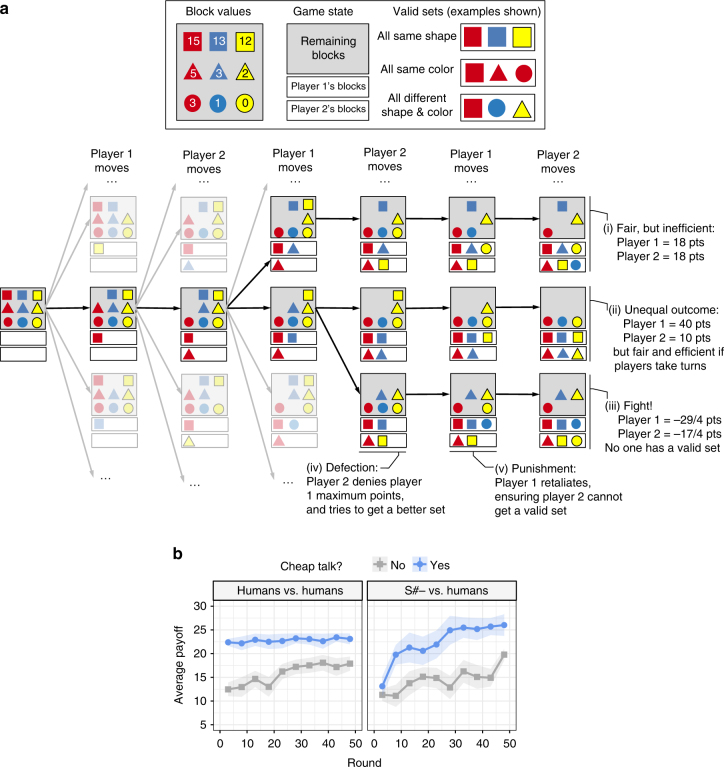Fig. 6.
Results in a repeated stochastic game called the Block Game. a A partial view of a single round of the Block Game in which two players share a nine-piece block set. The two players take turns selecting blocks from the set until each has three blocks. The goal of each player is to get a valid set of blocks with the highest point value possible, where the value of a set is determined by the sum of the numbers on the blocks. Invalid sets receive negative points. The figure depicts five different potential outcomes for each round of the game, ranging from dysfunctional payoffs to outcomes in which one or both players benefit. The mutually cooperative (Nash bargaining) solution occurs when players take turns getting the highest quality set of three blocks (all the squares). b Average payoffs obtained by people and S#– (an early version of S# that generates, but does not respond to, cheap talk) when associating with people in the Block Game. Error ribbons show the standard error of the mean. As in normal-form games, S#– successfully uses cheap talk to consistently forge cooperative relationships with people in this repeated stochastic game. For more details, see Supplementary Note 6

